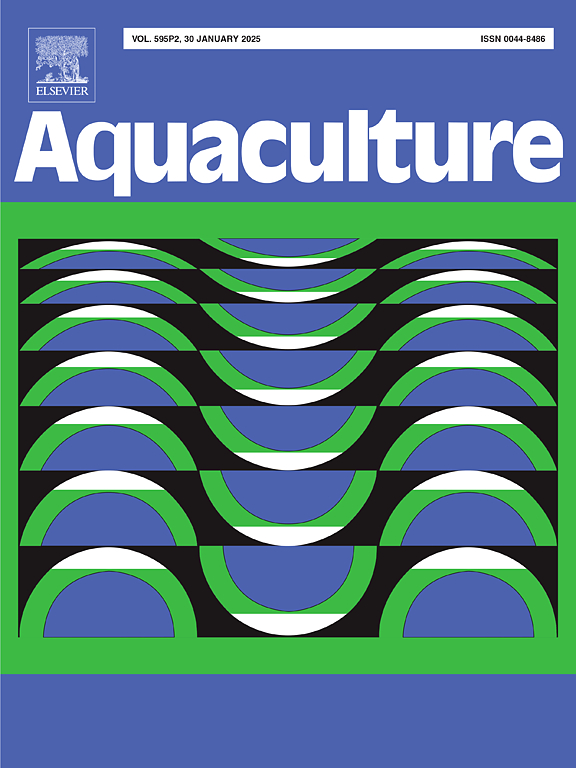Raising temperature at lower heating rate is an effective way to prevent Micropterus salmoides rhabdovirus disease
IF 3.9
1区 农林科学
Q1 FISHERIES
引用次数: 0
Abstract
Micropterus salmoides rhabdovirus (MSRV), is a single-stranded RNA virus that results in mass morbidity and mortality in largemouth bass (Micropterus salmoides), leading to severe economic losses for the largemouth bass aquaculture. To control outbreaks of MSRV disease, we investigated the influence of water temperature on the infectivity of MSRV and the resistance of largemouth bass to MSRV. In addition, we explored whether higher water temperature is an effective way to prevent outbreaks of MSRV disease. The rhabdovirus was added to three sterile pond water samples and incubated at 10 °C, 20 °C, and 30 °C for 14 days. The viral load of each pond water sample was calculated by RT-qPCR, and the infectivity was evaluated by inoculating grass carp ovary cells with samples from each pond water. In addition, juvenile fish were challenged with the MSRV at different water temperatures (15 °C, 20 °C, 25 °C and 30 °C). After the challenged, these juveniles were transferred to ponds with a water temperature ranging from 25 °C to 30 °C with different heating rates. The results showed that the number of viral copies decreased as temperature increased, and the viral copies in the 10 °C, 20 °C, and 30 °C groups were lower than the detection threshold at 11, 7, and 3 dpi, respectively. The viral infectivity was significantly reduced in the 30 °C group, with infectivity lost at 5, 5, and 1 dpi in the 10 °C, 20 °C and 30 °C group, respectively. In addition, the fish mortality rates were 56.67 % ± 10.41 %, 73.33 % ± 5.77 %, 60 % ± 10 % and 5 % ± 5 % at 15 °C, 20 °C, 25 °C and 30 °C, respectively. The mortality rate of the juvenile fish decreased from 59.52 % ± 4.12 % to 14.28 % ± 7.14 %, and the viral copies decreased significantly in the liver, spleen, and kidney of the T2 group that was exposed to a temperature increase of 0.5 °C every 1 h from 25 °C to 30 °C. In conclusion, higher temperatures (30 °C) can reduce MSRV infectivity, and a low heating rate (0.5 °C every 1 h) exerts a synergistic antioxidant effect by enhancing SOD and CAT activity and improving host immunity, ultimately helping prevent outbreaks of MSRV disease in largemouth bass. These results can be applied to improve biosecurity practices in largemouth bass farms to control the outbreaks of MSRV disease.
求助全文
约1分钟内获得全文
求助全文
来源期刊

Aquaculture
农林科学-海洋与淡水生物学
CiteScore
8.60
自引率
17.80%
发文量
1246
审稿时长
56 days
期刊介绍:
Aquaculture is an international journal for the exploration, improvement and management of all freshwater and marine food resources. It publishes novel and innovative research of world-wide interest on farming of aquatic organisms, which includes finfish, mollusks, crustaceans and aquatic plants for human consumption. Research on ornamentals is not a focus of the Journal. Aquaculture only publishes papers with a clear relevance to improving aquaculture practices or a potential application.
 求助内容:
求助内容: 应助结果提醒方式:
应助结果提醒方式:


